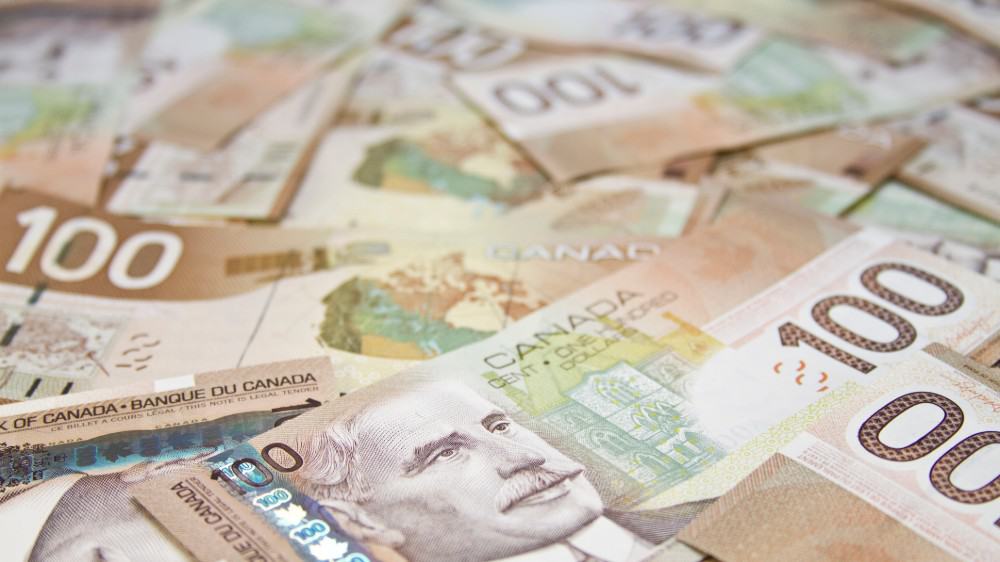If you’ve been saving diligently, maximizing your TFSA contributions, and investing intelligently in quality dividend stocks, your TFSA should be at about $100,000.
It doesn’t take as long as you think to get to a $1,000,000 TFSA portfolio from that point. To be exact, we have these reasonable assumptions in mind: the portfolio yields 3% and is growing by 10%. You’re also making $6,000 of annual contributions to the account for tax-free returns.
Investing in the TFSA is highly in the investors’ favour because there are no tax hindrances. That’s why you get to reinvest the dividends you receive in full.
The interesting part is this: once you get the first $1,000,000, the second million can be achieved in roughly four years, and the third million in three years, and the fourth million in one year. This is all possible thanks to your consistent savings, the power of compounding and reinvesting dividends, and no tax dampener.
Notice that from year 24 to 25, you would earn $1,107,607. There’s your earning more than a million dollars in a year with little work. All the while, you’re investing only $6,000 every year.
Early on in your investing career, your contributions do the heavy lifting, but the longer you stay invested, the more your investments do the work. Essentially, you’re getting your money to work hard for you so that you can work less if you choose to, or you can do the things that you love whether you get paid or not.
| Year | Portfolio | Annual Dividend | Dividend to Reinvest | Portfolio with Dividends Reinvested |
| 0 | $100,000 | $3,000 | $3,000 | $100,000 |
| 1 | $116,600 | $3,498 | $3,498 | $119,900 |
| 2 | $134,860 | $4,046 | $4,046 | $142,940 |
| 3 | $154,946 | $4,648 | $4,648 | $169,677 |
| 4 | $177,041 | $5,311 | $5,311 | $200,771 |
| 5 | $201,345 | $6,040 | $6,040 | $237,013 |
| 6 | $228,079 | $6,842 | $6,842 | $279,345 |
| 7 | $257,487 | $7,725 | $7,725 | $328,893 |
| 8 | $289,836 | $8,695 | $8,695 | $387,007 |
| 9 | $325,419 | $9,763 | $9,763 | $455,301 |
| 10 | $364,561 | $10,937 | $10,937 | $535,711 |
| 11 | $407,617 | $12,229 | $12,229 | $630,557 |
| 12 | $454,979 | $13,649 | $13,649 | $742,627 |
| 13 | $507,077 | $15,212 | $15,212 | $875,269 |
| 14 | $564,385 | $16,932 | $16,932 | $1,032,505 |
| 15 | $627,423 | $18,823 | $18,823 | $1,219,176 |
| 16 | $696,766 | $20,903 | $20,903 | $1,441,103 |
| 17 | $773,042 | $23,191 | $23,191 | $1,705,297 |
| 18 | $856,946 | $25,708 | $25,708 | $2,020,199 |
| 19 | $949,241 | $28,477 | $28,477 | $2,395,980 |
| 20 | $1,050,765 | $31,523 | $31,523 | $2,844,901 |
| 21 | $1,162,441 | $34,873 | $34,873 | $3,381,744 |
| 22 | $1,285,286 | $38,559 | $38,559 | $4,024,336 |
| 23 | $1,420,414 | $42,612 | $42,612 | $4,794,186 |
| 24 | $1,569,056 | $47,072 | $47,072 | $5,717,250 |
| 25 | $1,732,561 | $51,977 | $51,977 | $6,824,857 |
Getting a 3% yield and growth of 10%
Currently, a stock that roughly fits these criteria is Canadian Tire (TSX:CTC.A). The iconic Canadian retailer has been very well managed with a high five-year return on equity of 14%. Currently, the quality stock offers a yield of 2.8% and has increased its dividend by 16% per year on average in the last 15 years.
Canadian Tire has expanded its payout ratio from 15% to 32% over the one-and-a-half decade. The payout ratio of 32% is still safe, but it could mean slower (but still excellent) dividend growth in the future.
Going forward, the retailer’s dividend increases should more or less match its earnings growth at roughly 10% per year.
CTC.A PE Ratio (TTM) data by YCharts
Currently, the stock is actually undervalued compared to its historical valuations because the market is worried about the competitive retail landscape, particularly from mega-sized e-commerce companies like Amazon. The graph above shows that it’s trading at the low end of its P/E range.
CTC.A Average Diluted Shares Outstanding (Annual) data by YCharts
One way that Canadian Tire can return value to shareholders is by buying back its own common shares at a discount. The company has reduced its share count by roughly 20% since 2014! Now would be a great opportunity for the retailer to buy back shares at a bargain.
Some final thoughts
By getting a yield of 3%, investors only need to seek earnings growth of 7% to get the 10% portfolio growth. Moreover, it would make much more sense that your portfolio may have stocks yielding 0-6% with different growth rates. Typically, no or low-yielding stocks offer higher growth.
The scenario above assumes smooth-sailing investing which is seldom the case in real life — markets do correct and crash from time to time, at which time money invested, including dividends reinvested, will generate even greater long-term returns than what our goal requires.
One more thing, the TFSA contribution room will increase over time. If you continue to max out your TFSA every year and invest intelligently, you’ll only get to that $1 million and the next million dollars quicker!












